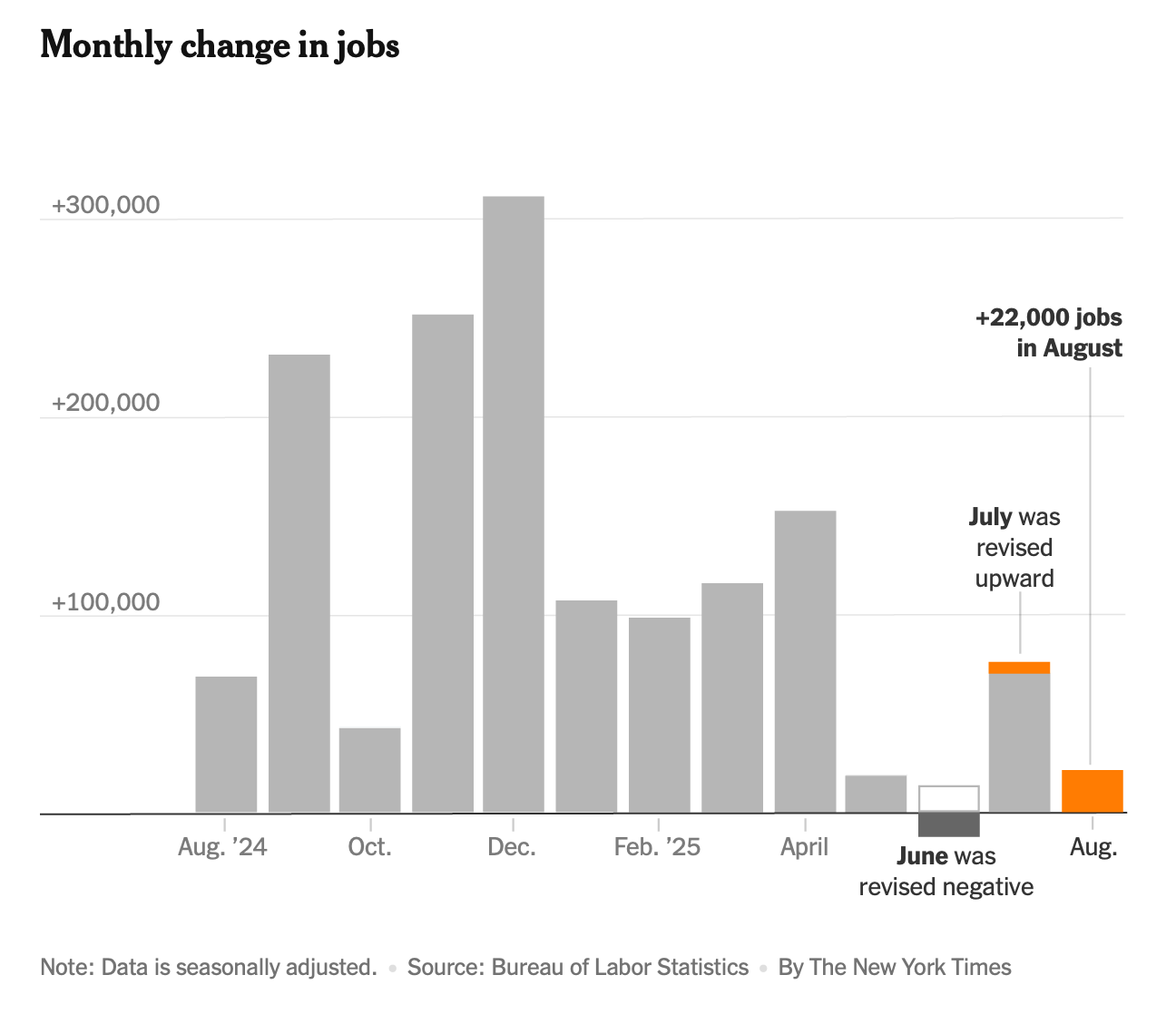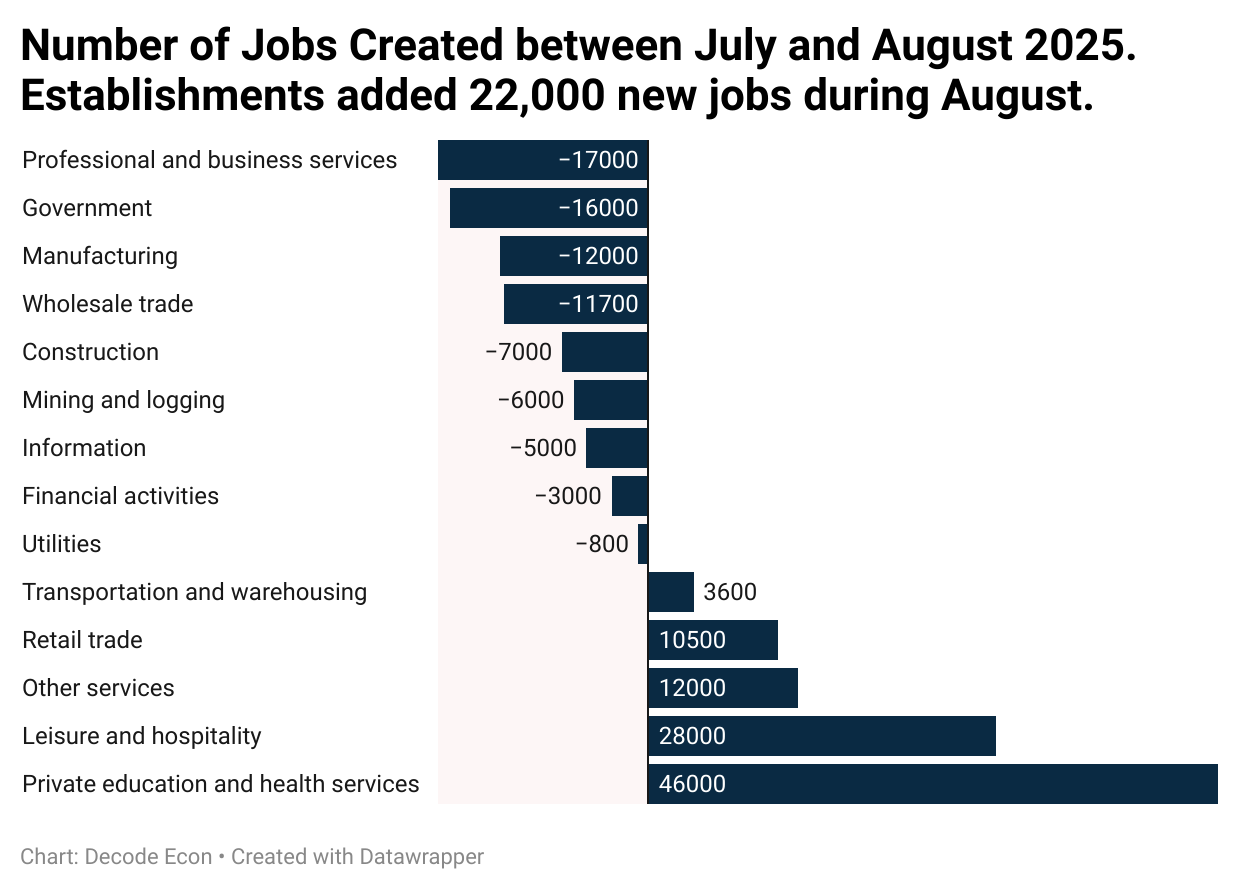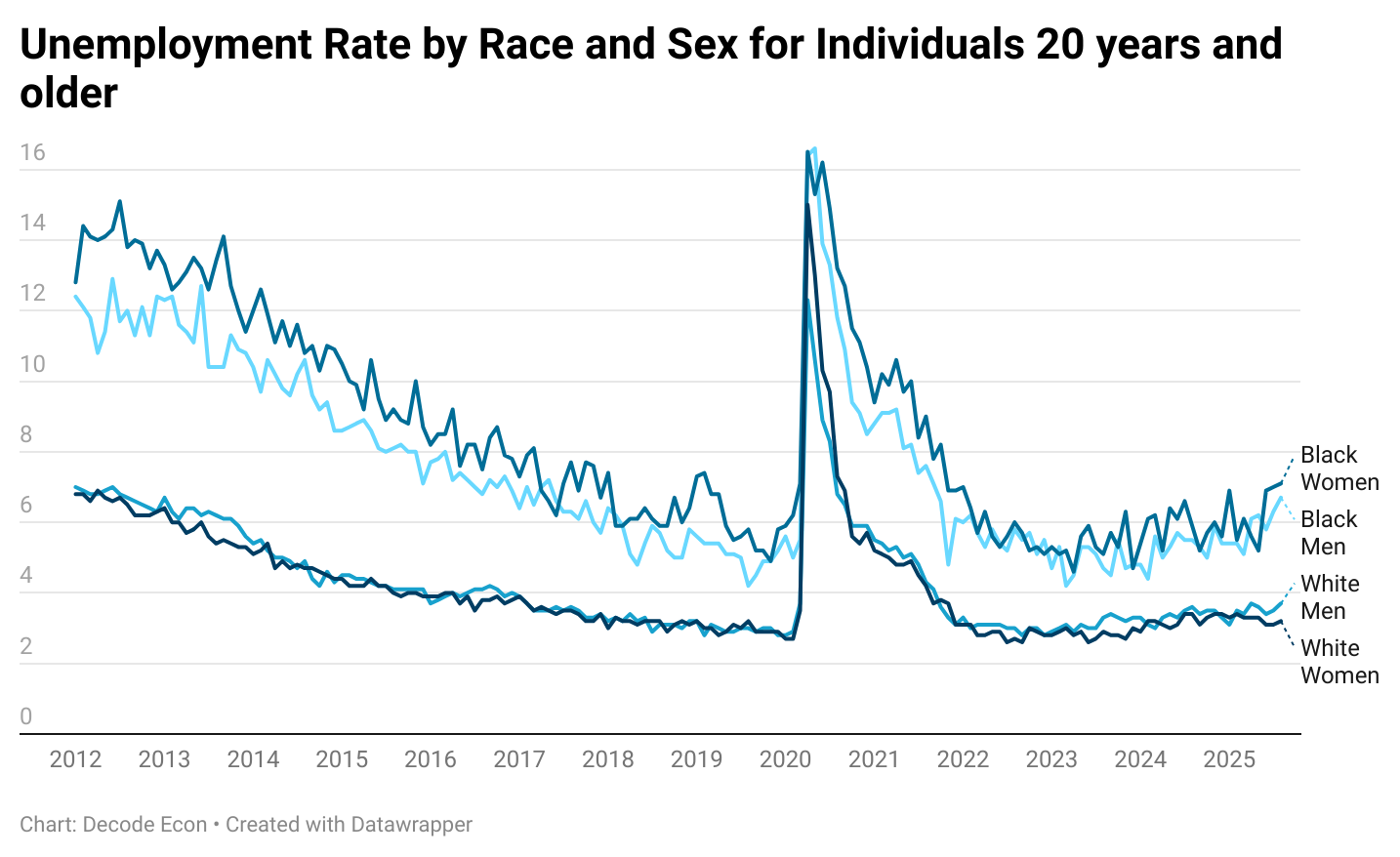How Bad is the Jobs Situation?
Beyond the Top-Line Figure
The top-line figures in the August jobs report signaled concerns. Although the unemployment rate rose slightly to 4.3%, the economy created a dismal 22,000 jobs, far below the 75,000 market expectations. There are even more significant concerns once you dig deeper into the report.
Revising June
The BLS has come under scrutiny for its revisions. The revisions have trended negative for the past year, with initial releases being higher than revised numbers. This has caused the administration to raise concerns about political bias in the BLS and led to the firing of Erika L. McEntarfer. In August, following McEntarfer's departure, the BLS reported that revisions for June indicated a loss of 13,000 jobs in that month. This was the first monthly decline in total jobs since 2020.
Job Losses by Industry
The healthcare industry has been a key driver of the U.S. labor market. In August, we saw the first signs that job growth in the healthcare industry is slowing. Without the jobs created by the healthcare industry, the U.S. would have lost 24,000 jobs in August. The graph below shows the net jobs created by industry in August.
Manufacturing Under Pressure
One sector worth highlighting is manufacturing, which shed 12,000 jobs in August. This is striking because recent tariff policies have been framed as tools to revitalize U.S. manufacturing and bring production back onshore. In practice, however, tariffs have increased costs for firms reliant on global supply chains, raising input prices and limiting hiring. Rather than creating the “reshoring boom” policymakers promised, manufacturing employment is showing signs of weakness. For workers, this means that the very policies intended to protect their jobs may actually contribute to instability and uncertainty.
The recent raid on the Hyundai plant in Savannah, GA, exacerbates this policy contradiction. The raid resulted in the detention of 450 foreign nationals who were investing in the construction of a Metaplant worth $7.59 billion, and projected to create 8,500 jobs in the state. Parts of the 3,000-acre campus were still under construction during the raid. This move will hinder future direct foreign investment (DFI) and impact job creation.
The Unequal Burden in the Job Market
The August jobs report gives us a mixed picture. The economy added 22,000 jobs, but beneath the surface, racial and gender disparities are widening.
Black women now face the highest unemployment rate among the groups tracked — 7.1%, compared with 6.7% for Black men, 3.7% for White men, and 3.2% for White women. This gap isn’t new, but it has been growing in recent months, reversing much of the progress made since the pandemic recovery. When the unemployment rate is low overall, it compresses the difference between groups. As the economy slows, weaknesses and inequality begin to rise.
Why Black Women?
Black women are highly represented in government jobs, a sector that shed 16,000 positions in August. Cuts in professional and business services (–17,000) and manufacturing (–12,000) add further strain. At the same time, job growth was concentrated in private education and health services (+46,000) and leisure and hospitality (+28,000), sectors that don’t fully offset the losses in areas where Black women tend to be more employed.
The Bottom Line
The August report serves as a reminder that aggregate numbers can mask deeper divides. Policymakers, businesses, and communities need to pay attention not just to the number of jobs created, but also to who gains them and who is left behind. The August jobs report reveals significant variations in labor market outcomes across industries, racial groups, and genders.
We want more people like you. Please share this with a friend who’d enjoy being part of our community.






Im surprised at how resilient hospitality is. I guess I underestimate the inelasticity. Unsurprisingly minorities suffer the most